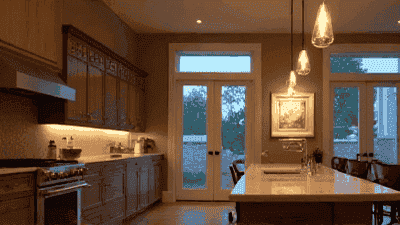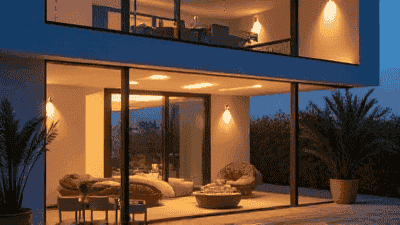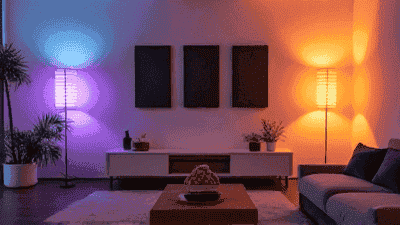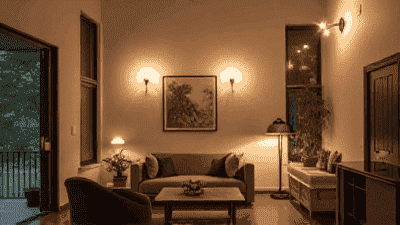
In today’s fast-paced world, smart technology is transforming the way we live. From thermostats to security systems, our homes are becoming more connected and efficient than ever before. One of the most impactful advancements in home automation is smart lighting. Smart lighting systems not only enhance convenience but also improve energy efficiency, security, and overall ambiance in your home.
Smart lighting refers to a lighting system that can be controlled remotely, automated, or customized to suit your needs. Unlike traditional lighting systems, smart lighting uses wireless technology and smart devices to allow you to control your lights from a smartphone app, voice assistant, or even a smart home hub. These systems often include features like dimming, scheduling, color changing, and integration with other smart home devices.

Switching to smart lighting offers a range of benefits that go beyond convenience. Here are some of the most compelling reasons to upgrade your home’s lighting system:
Energy Efficiency: Smart lights, especially LED bulbs, consume significantly less energy than traditional bulbs. You can also set them to turn off automatically when not in use, reducing energy waste.
Convenience: Control your lights from your phone, tablet, or voice assistant without having to get up or fumble for a switch.
Enhanced Security: Smart lights can simulate your presence at home by turning on and off at random times, deterring potential intruders.
Customizable Ambiance: Adjust the brightness, color temperature, and even the color of your lights to create the perfect atmosphere for any occasion.
Integration with Other Smart Devices: Smart lighting systems can work seamlessly with other smart home devices, such as security cameras, thermostats, and speakers, to create a fully connected ecosystem.
Longevity: LED smart bulbs last longer than traditional bulbs, reducing the need for frequent replacements.
Before diving into smart lighting, it’s important to understand the basic components and how they work together. Here’s a quick overview of the key elements:
Smart bulbs are the most common starting point for smart lighting. These bulbs connect to your home Wi-Fi or a smart hub, allowing you to control them via an app or voice assistant. Some popular brands include Philips Hue, LIFX, and Wyze.
Smart switches replace your traditional light switches and allow you to control your lights remotely or through automation. They are a great option if you don’t want to replace every bulb in your home.
Smart plugs can turn any lamp or light fixture into a smart light by connecting it to your Wi-Fi network. These are ideal for adding smart lighting without replacing your existing fixtures.
A smart hub is a central device that connects all your smart lighting and other smart home devices. It acts as a bridge between your devices and your smartphone or voice assistant. Examples include the Samsung SmartThings Hub and the Philips Hue Bridge.
Voice assistants like Amazon Alexa, Google Assistant, and Apple Siri allow you to control your smart lights with simple voice commands. They can also integrate with other smart home devices for a seamless experience.

Now that we’ve covered the basics, let’s explore how to implement smart lighting in every room of your home. Each room has unique lighting needs, and smart lighting can help you create the perfect atmosphere for each space.
The living room is often the central gathering space in your home, so it’s important to create a warm and inviting atmosphere. Here are some smart lighting ideas for your living room:
The kitchen is a functional space that requires both task lighting and ambiance. Smart lighting can make cooking and dining more enjoyable:
The bedroom is your personal sanctuary, and smart lighting can help you create a relaxing and comfortable environment:
Bathroom lighting should be functional yet soothing. Here’s how to use smart lighting in your bathroom:
A well-lit home office is essential for productivity and focus. Here are some smart lighting ideas for your workspace:
Don’t forget about your outdoor spaces! Smart lighting can enhance the safety and beauty of your yard and patio:
With so many options available, it can be overwhelming to choose the right smart lighting system for your home. Here are some tips to help you make the best decision:
Consider Compatibility: Ensure that your smart lighting system is compatible with your existing smart home devices (e.g., voice assistants, smart hubs, etc.).
Think About Range: If you’re using a smart hub, make sure it has sufficient range to cover your entire home.
Check App Features: Look for a user-friendly app with features like scheduling, scene creation, and customization.
Prioritize Energy Efficiency: Choose smart bulbs with LED technology to save energy and reduce your electricity bills.
Read Reviews: Research customer reviews and ratings to ensure you’re investing in a reliable and high-quality product.
Start Small: If you’re new to smart lighting, start with a few smart bulbs or switches and expand your system over time.

One of the greatest advantages of smart lighting is its ability to integrate with other smart home devices. Here’s how to create a fully connected ecosystem:
Voice Control: Connect your smart lights to a voice assistant like Amazon Alexa or Google Assistant to control them with simple voice commands.
Security Integration: Pair your smart lights with security cameras or alarm systems to enhance home security. For example, set your lights to flash if a security camera detects motion.
Automated Routines: Create routines that link your smart lights with other devices. For instance, set your lights to turn on when your smart thermostat detects that you’re home.
Scene Creation: Use scenes to coordinate your smart lighting with other devices. For example, create a “Good Morning” scene that turns on the lights, starts the coffee maker, and plays your favorite music.
Once your smart lighting system is up and running, it’s important to maintain it for optimal performance. Here are some tips:
Update Firmware: Regularly update the firmware of your smart bulbs and devices to ensure they’re running the latest software.
Check Connectivity: If your smart lights aren’t responding, check your Wi-Fi connection or smart hub to ensure everything is connected properly.
Replace Batteries: If you’re using smart switches or motion sensors with batteries, replace them as needed to avoid connectivity issues.
Reset When Needed: If a smart bulb or switch isn’t working, try resetting it according to the manufacturer’s instructions.
Smart lighting is one of the most accessible and impactful ways to upgrade your home. By offering convenience, energy efficiency, and enhanced ambiance, smart lighting systems can transform the way you live. Whether you’re looking to create a cozy living room, a productive home office, or a secure outdoor space, smart lighting has something to offer for every room in your house. Start small, experiment with different setups, and enjoy the benefits of a smarter, more connected home.